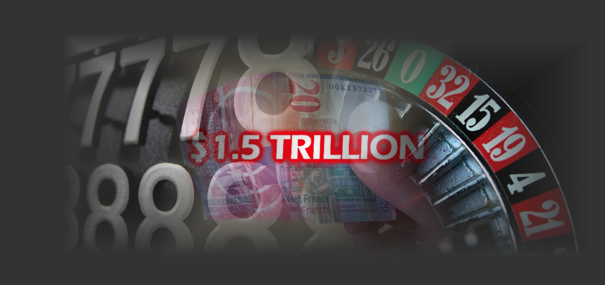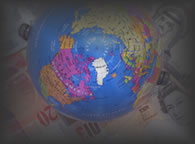


Money Laundering Statistics
At an individual country level….
In 2000, illegal narcotics sales in the United States were estimated by the White House Office of National Drug Control Policy (ONDCP) Drug Policy Information clearinghouse as being: $36 billion spent on cocaine, $11 billion on marijuana, $10 billion on heroin, $5.4 billion on methamphetamine and $2.4 billion on other illegal substances. In total, the overall spend in 2000 reached $160.7 billion – with Americans consuming approximately 260 metric tons of cocaine and 13.3 metric tons of heroin.
The use of illegal substances has some strange but telling after effects. Research has shown that 90 per cent of banknotes in circulation in the United States are contaminated by narcotics; a similar analysis in London in 1999 showed that 99 per cent of all banknotes circulating in the city are tainted with cocaine, with 1 in 20 exhibiting high levels of the drug, suggesting that they have been handled by dealers or have been used to snort the drug.
The black market peso exchange system in Colombia is estimated to launder $6 billion per annum in drug profits.
It has been estimated that each year $15 billion flows our of Russia – and it is almost impossible to determine how much of this figure is capital flight and how much is money laundering. Government figures in the mid 1990’s calculated that 25 per cent of the country’s gross national income was derived from organized criminal activities.
The NCIS ‘ United Kingdom Threat Assessment of Serious and Organized Crime’ in 2003 stated that the overall size of criminal proceeds in the country – and the amount that is laundered is unknown. However, customs authorities had estimated that the annual proceeds from crime in the UK were anywhere between £19 billion and £48 billion – with £25 billion being a realistic figure for the amount that is laundered each year.
A 1996 report published by Chulalongkom University in Bangkok estimated that a figure equal to 15% of the country’s GDP ($28.5 billion) was laundered criminal money.
Mexican drug cartels (now more powerful than their contemporaries in Colombia ) are conservatively estimated to generate profits of more than $9 billion per year - that is approximately 5% of Mexico ’s GDP.
The Canadian Solicitor General commented in 1998 that the illicit funds generated and laundered in Canada each year was between $5 and $17 billion.
Also in 1998 the Swiss Finance Ministry confirmed that the country was implicated in $500 billion of money laundering each year. Although no official figure exists it has been reliably estimated that between $40 to $50 billion of Russian Money resides in Swiss Banks - with realistically little way of knowing whether it is flight capital or laundered money.
In Indonesia, which has a rapidly escalating money laundering problem, one US law enforcement agency states that $500,000 is washed on a weekly basis by West Africans and Southeast Asians using West African Couriers.
The Republic of Ireland with its growing financial centre of Dublin estimates that in 1998 $126 million was suspected of being laundered through the country.
- Informal estimates voiced in 1997 were that yearly money laundering activity in Italy totalled over $50 billion.
And then at a global level……
- The United Nations Human Development Report of 1999 commented that organized crime syndicates grossed $1.5 trillion per annum - which is more than many developed economies and multinational corporations. Recent figures from the International Monetary Fund suggest that the amount is now nearer $2 trillion.
- In March 1998 Dow Jones News reported that money laundering amounted to between 2-5% of world GDP: in other words between $1 and 3 trillion.
- It is estimated that there are in excess of 200 million drug users in the world and in 1995 the world’s illegal narcotics trade was calculated at $400 billion. This total is equivalent to 8 per cent of the world’s trade- that is more than motor vehicles, iron and steel and about the same as the gas and oil industry. In 1999 a Congressional hearing was told that up to $48 billion per year in profits were generated by illegal drug sales, which was laundered.
- If you accept - and I think you should - that the scale of global money laundering each year is at least $1.5 trillion then either the staggering, horrifying scale of the whole problem suddenly snaps into place or you are so bemused that you still don’t really believe it. To put that $1.5 trillion figure into context, in real and comparative terms: $1.5 trillion is $1,500,000,000,000 - which when put like that is even more astounding.
- The estimated GDP of the United States in 1998 was $8.511 trillion - thus the annual money laundering figure is 17% of this. Or to put it another way the GDP of the United States is only just five times that of Global Organized Crime Inc. In fact the figure of $1.5 trillion is only dwarfed by three individual country’s economies.
- The largest corporation quoted in the Fortune 500 as at February 2000 is General Motors with a turnover of $161,315,000,000 which is about a tenth of the amount laundered each year (or Money laundering per annum is ten times the annual turnover of General Motors).
- The GDP of Switzerland is $191,000,000,000 - just an eighth of the annual money laundering figure.
One could just go on - and the comparisons would become even more overwhelming. Normally when such a staggering financial value is placed on Money Laundering the normal reaction is one of incredulity and extreme scepticism. Combined with this is the claim that all such figures have no basis in actuality - that essentially they have been plucked out of thin air. The Australian, John Walker has addressed these problems in his work on ‘Modelling Global Money Laundering Flows’. The bad news for the sceptics is that output from the research and modelling process has produced a global money laundering total of $2.85 trillion per year. Rare for someone who introduces a new economic model, Walker actually admits that he is not claiming that the model is yet producing accurate estimates of money laundering flows. That being said, the critical fact is that the total produced is almost twice as much as official estimates or calculations. The basis of Walker ’s model is as follows:
(It) uses a range of publicly available crime statistics to estimate the amount of money generated by crime in each country around the world, and then uses various socio-economic indices to estimate the proportions of these funds that will be laundered, and to which countries these funds will be attracted for laundering. By aggregating these estimates, an assessment can be made of the likely extent of global money laundering...
For simple folk like me, this means taking the national crime figures and estimating what of this is laundered and where. Thus we have estimates which place the value of global money laundering between $1.5 and $2.85 trillion each year. Such staggering totals raise a variety of issues, but surely the two fundamental questions are:
Where on earth (literally) is all of this money?
Why do the reports of suspicions of money laundering filed by financial institutions and professionals to relevant official bodies across the world represent merely a minuscule percentage of this estimated total?
And once again, at the risk of stating the obvious, these total figures relate to one year alone. Presumably this is newly generated criminal wealth to be added to the amounts produced in previous years. Thus, even basing it on the lower estimate, the last five years of the 20th century must have produced a figure in excess of $7.5 trillion. Because even if the figures for previous years in that time span were lower than $1.5 trillion per year, we must not forget the interest which would be generated.
So prior to the anti-money laundering initiatives that followed 9/11, why were the suspicious transaction reports filed by civilised countries across the world so pitifully short of anything approaching this total?
In Switzerland in 1998 there were 160 suspicious transaction reports with a financial value of 330 million Swiss francs (roughly equivalent to $210 million). This compares with about 30 to 40 previously. With typical Swiss understatement, Daniel Thelesklaf, the director of the office responsible for tracking money laundering commented that “the number of reports is still low, given Switzerland’s importance as a financial centre”.
In Belgium between December 1993 and June 1998 there were 1416 cases of money laundering sent to the judicial system with a value of $3.92 billion. In 1997 there were 476 suspicious reports filed with a value of 42.5 million Belgium francs (approximately $1.1 billion).
In most other countries the financial value of reported suspicious transactions relating to money laundering is hard to come by. Nevertheless the number of reports does not inspire confidence that across the world we are doing nothing more than scratching the surface. In the United Kingdom in 1998 there were 18,000 suspicious transactions reported. In the Netherlands in the first half of 1997 there were 5,683 reports: but in the previous year only 0.5 per cent of such reports led to arrests and prosecution. Hong Kong appears to be particularly vigilant: in 1996 there were 4,124 reports and from January to Mid November 1998 there were 4,700 reports of suspicious activity. In Cyprus between 1997 and late 1998 there were 125 referrals - but half of them were from other governments. In the first nine months of 1998 Greece had approximately 200 cases of suspicious activity. And finally in Hungary between 1994 and 1998 there were about 2,000 relevant reports
If this is just scratching the surface, it is not the law enforcement agencies that are at fault: these reports are generated by banks, professionals and business. In the United Kingdom in 1997 NCIS (National Criminal Intelligence Service), the relevant law enforcement body that receives notification of suspicious transactions, dealt with 14,000 such tip-offs. Legal and regulatory obligations mean that banks, other financial institutions and various professionals have to report suspicions. Of these, 7,000 came from banks; 3,000 from building societies. But, here is the rub: 44 came from accountants - and there are 100,000 such professionals in the country; 236 came from solicitors - of which there are over 40,000 practising in the UK. Insurance Companies (3.7 per cent of total reports), financial advisers (3.8%) and bureau de change (17.5 per cent, that is 2000 reports, double that of the previous year) all succeeded where accountants and solicitors so patently failed.
It could of course be argued that solicitors and accountants reported large value cases (because that is what they predominantly deal with) and thus the number will be lower than volume markets such as those inhabited by banks and building societies. Such a case could be argued - but I’m not going to. I suggest that almost the opposite is true: the sums involved in money laundering are so huge that you cannot miss them (unless of course you want to). How can anybody ignore:
The $500 million stashed away in Swiss banks by Ferdinand Marcos.
The various Russian money laundering stories where figures of $15 billion washed through accounts have surfaced.
The former dictator of the Congo, Joseph Mobutu, is believed to have transferred up to $5,000 million from the country.
As for where the funds generated by money laundering reside, I suggest that the best place to start is offshore. Conservative estimates place the funds controlled by offshore centres at $5 trillion - which increases by $500 billion each year.....

 
|
|